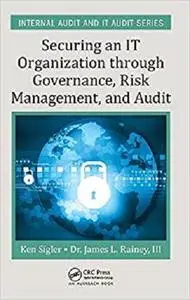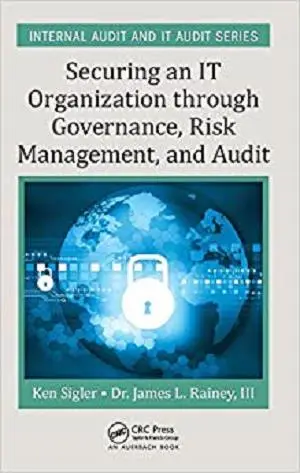Securing an IT Organization through Governance, Risk Management, and Audit (Internal Audit and IT Audit) by Ken E. Sigler, James L. Rainey III
English | January 22, 2016 | ISBN: 1498737315, 1138491101 | 396 pages | PDF | 4.78 Mb
English | January 22, 2016 | ISBN: 1498737315, 1138491101 | 396 pages | PDF | 4.78 Mb
Past events have shed light on the vulnerability of mission-critical computer systems at highly sensitive levels. It has been demonstrated that common hackers can use tools and techniques downloaded from the Internet to attack government and commercial information systems. Although threats may come from mischief makers and pranksters, they are more likely to result from hackers working in concert for profit, hackers working under the protection of nation states, or malicious insiders.
Securing an IT Organization through Governance, Risk Management, and Audit introduces two internationally recognized bodies of knowledge: Control Objectives for Information and Related Technology (COBIT 5) from a cybersecurity perspective and the NIST Framework for Improving Critical Infrastructure Cybersecurity (CSF). Emphasizing the processes directly related to governance, risk management, and audit, the book provides details of a cybersecurity framework (CSF), mapping each of the CSF steps and activities to the methods defined in COBIT 5. This method leverages operational risk understanding in a business context, allowing the information and communications technology (ICT) organization to convert high-level enterprise goals into manageable, specific goals rather than unintegrated checklist models.
The real value of this methodology is to reduce the knowledge fog that frequently engulfs senior business management, and results in the false conclusion that overseeing security controls for information systems is not a leadership role or responsibility but a technical management task. By carefully reading, implementing, and practicing the techniques and methodologies outlined in this book, you can successfully implement a plan that increases security and lowers risk for you and your organization.



